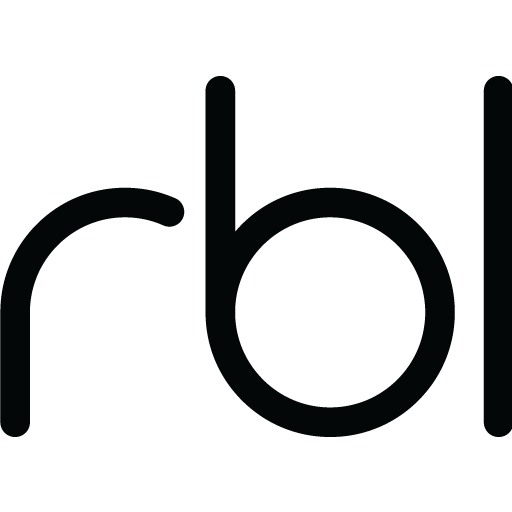2020. The year that has ripped up every marketing plan; laid waste to every forecast and anticipated milestone; and introduced new consumer behaviours and values. Where every single brand has been challenged inside and out about who they are, what they stand for and why they exist.
As we move into summer, every marketing leader needs to press the reset button, and get to grips with a new set of consumer behaviours and trends that are redefining the market/landscape.
It is undeniably a hugely unsettling and difficult time for many brands, but such seismic shifts can also be liberating. Old rules and ways of doing things can be broken; innovations and ideas that would have taken many years to come to fruition can happen faster. Big, oil tanker organisations that were so hard to turn, now have a unique opportunity to permanently adopt some of the more agile and entrepreneurial approaches they implemented to survive, in a way that could now help them to thrive. We’ve seen the rapid acceleration of emerging trends in consumer behaviour which will lead to significant, long-term change in the value people place on brands and the way in which they want to engage with and experience them, creating new windows of opportunity and possibilities for growth for many businesses.
The coming months are critical to every business. They will define the success of your brand and your leadership. Here are some of the trends driving change that you need to be thinking about to move your brand forward positively, with purpose.
Brand is personal
People have a new set of needs, challenges and anxieties. Many remain time poor and are feeling burnt out. More than ever people are looking for brands that listen, are truly understanding of their personal needs and continuously adapt to them; that make the task of engaging with them easier, faster, more efficient, and more enjoyable. Brands need to be both ultra-convenient and personalised.
Think Monzo. Think Calm.
Brand is community
The importance of community has never been stronger. People are joining forces to protect the people and things they hold dear, including the fundamental fabric of society. Brands, too, now have a perceived role and responsibility in helping communities stay together, come together and thrive together. They can be the glue, provide the tools, and create the moments that bring us together. So, the organisations that show they really do care; are committed to giving more/going above and beyond; and are invested in rebuilding society will be the ones building the greatest affinity with consumers long-term.
Think NHS. Think Brewdog.
Brand is local
We remain a deeply connected global economy where big brands still rank high in our buying choices, yet consumers are now attributing a much greater value to ‘local’ and are consciously seeking to buy local through independent or community means. Brands will need to explore ways to connect locally by providing tailored experiences or engaging in locally relevant ways. They may also look to shield their own operations through vertical integration and push harder on ‘made in’ lines and messaging.
Think Riverford. Think Deliveroo.
Brand is relationship
People’s innate desire to be with others who share their views and interests is even stronger now that we’ve all been physically driven apart. Brands need to help fill that void: enabling new relationships and offering a place of belonging.
As people’s usual interpersonal relationships are challenged and we spend more time at home, consumers are using digital to connect, learn and play—and they will continue to do so. We’re seeing a huge uplift in membership services. Brands can help people to make new connections and access of new products and services. Fitness, education, skills building, wellness/self-care, entertainment are all sectors that have evolved in the past few months to be more contact free and brands that are strengthening their relationships with users or enticing new ones by helping relationships to flourish in different spaces are being perceived positively.
Think Joe Wicks – the Nation’s PE teacher. Think Strava.
Brand is responsible
Pre 2020, consumers were already more mindful of buying responsibly and sustainably – choosing brands that offer them an eco-status. Fast forward, having had time to reflect and reassess, they are far more conscious about their choices, and indeed the actions brands themselves are making. Not only will brands need to make authentic responsibility a key part of their offer, but more and more people will choose brands that are activating their social purpose and using their voice and means to do more.
Organisations must become the change they are talking about. “They must walk the walk before tweeting the tweet”.
Think Co-op. Think Ben & Jerry’s.
Brand is experience
Our ability to experience brands has been fundamentally changed and will continue to be impacted for many months to come. The desire for great experiences hasn’t gone, it’s just that consumers will be even more discerning and conscious about what they choose to spend their time on. They want more from their moments.
Consumers’ expectations of being able to access, interact and experience brands online seamlessly are at an all-time high. With much more time online and less opportunity to physically interact with consumers, organisations must look even harder at their digital presence and consider not only how their brand lives and breathes online, but how immersive technologies can provide a new way for people to interact with and experience them.
Think Glastonbury. Think TikTok.
Brand is identity
With global movements challenging society’s views, systems and practices and health crises challenging every norm, people are searching harder for brands that provide meaning and align with their values. And this means they want brands they can relate to on an individual level but are also genuinely inclusive on societal level. Brands must celebrate diversity and individuality in a meaningful way.
Paying lip service is not enough and a mistake many brands will make. Brands need to look long and hard at who their customers really are, what they really want and use their platforms to share their stories.
Think Proctor & Gamble. Think BBC.
Brand is culture
Employees are now as important as customers. Our working lives have been as impacted as our personal lives, and the long-term impact on internal culture can’t be underestimated. For some businesses, their people feel will feel stronger and more galvanised, for others they will feel fractured and bruised. This is a moment of truth. The way people used to work has been challenged, and more will be asked of employers to keep their people safe, healthy, supported, happy.
With internal culture essentially being the window to your organisational soul and therefore a critical part of your brand, organisations must now look inwardly and listen to what their people think and need and redefine themselves accordingly.
Think Twitter. Think Zoom.
Brand is purpose
Uncertainty may continue but being able to move forward with confidence will be a huge advantage.
Whether it’s recovery, refocusing or reinforcing your brand – tap into our ideas, creativity and experience and let us help you navigate a clear way forward, and build Positive Purpose into your future strategy.
More information on our approach to Positive Purpose:
The CEO’s view:
How do you steer your organisation in a new, positive direction when the world turns upside down? Read more
The creative’s view:
Why we’ve evolved our brand – and why you might also need to. Read more
See Positive Purpose in action:
Uniting 40 separate businesses behind a powerful, unifying philosophy. See more
Transforming an international federation into a global, dynamic, sports movement. See more
Check out our related blog posts below:








